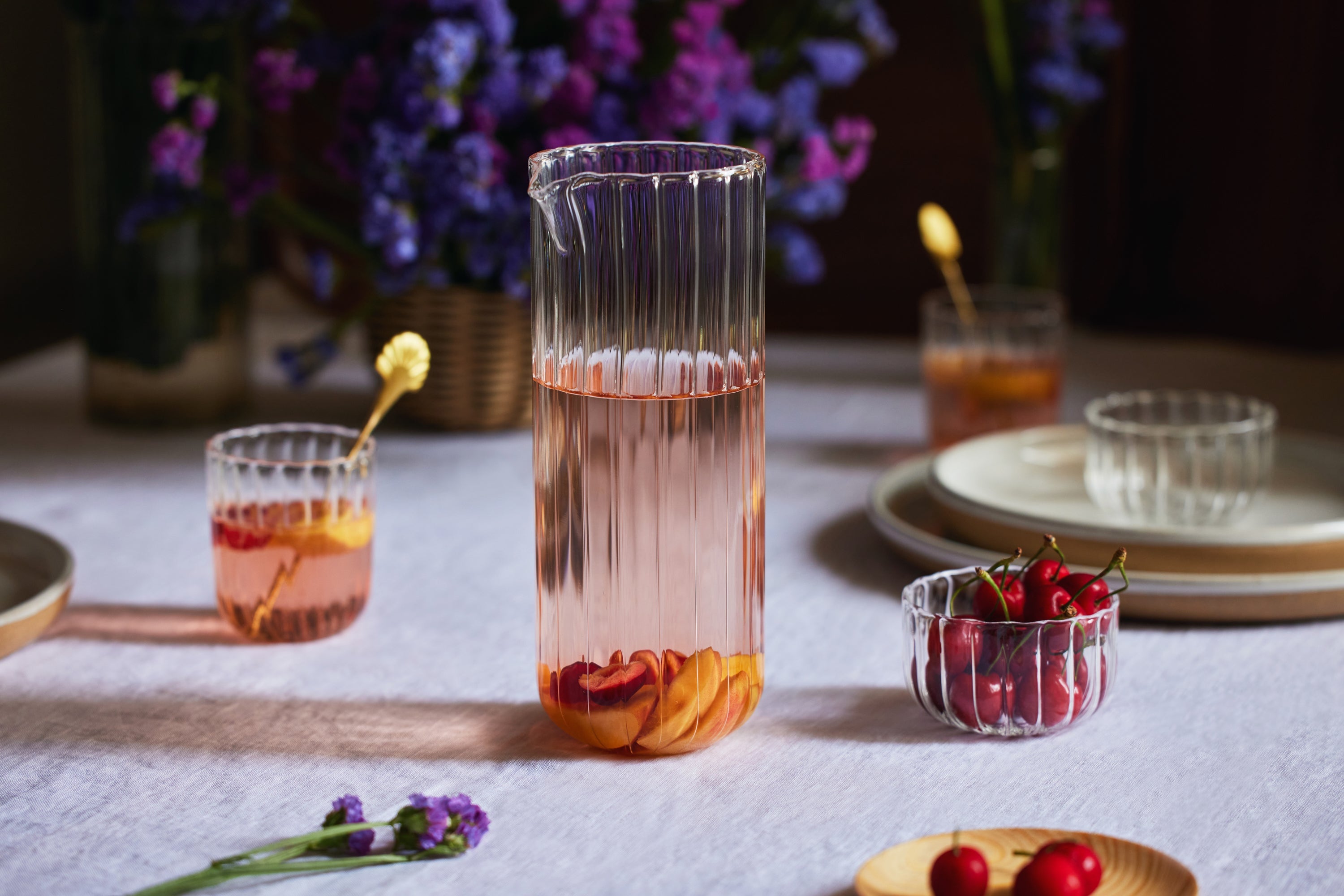
History
Borosilicate glass was invented in the late 19th century by a German Scientist Otto Schott. Recognizing the need for a more durable laboratory glassware, Schott, in collaboration with his mentor, Professor Ernst Abbe, embarked on an experimental journey to enhance the traditional glass composition. After extensive research, they identified boron as a key element which when added to glass enhanced its thermal capacity. Using boric acid, Schott developed the first glass formulation which could withstand thermal deformation. Today, this glass is made up using silica and boron trioxide as the main glass-forming constituents and this is where the name BORO-SILICATE comes from.
Given its unique properties, borosilicate glass quickly became a material of choice for laboratory equipment and other applications requiring high thermal resistance. But not all glassware share these qualities. Sometimes, when we pour chai in a favorite glassware, it suddenly either shatters or cracks. Such glassware are unsuitable when it comes to sudden temperature changes. One such glass is Soda Lime.
Soda-Lime Glass v/s Borosilicate Glass
Soda-lime glass is the most common type of glass, used in everyday items like windows, bottles, and drinking glasses. Many companies use this glass for their cookware because it is readily available and relatively cheaper. Have you ever experienced that sudden moment of surprise when you retrieve a dish from the refrigerator to warm it up, only to witness the glass shatter? It is because the soda-lime glass lacks the thermal resistance like the borosilicate glass. It is primarily composed of silica (69%), soda (15%), and lime (9%). When exposed to sudden temperature changes, soda lime glass tends to expand or contract more rapidly than borosilicate glass.This rapid change can lead to stress fractures or outright shattering.In contrast, Borosilicate Glass contains a significantly higher silica content (80%), making it substantially more resistant to temperature fluctuations during temperature changes upto 180°C without breaking while it is just 45°C for its counterpart.
Making and Uses
Borosilicate glass like other glasses is shaped using a process called glassblowing. This involves heating the glass into a molten state and then using tools and colours to mould it into the desired shape and colour. Probably the first and the most prominent use of Borosilicate glass is being used as laboratory equipment for its unmatchable properties, however its uses extend far beyond that. This unsung hero is making waves in homes across the globe and for good reason. Borosilicate glass is light & which makes it easy to handle. It's perfectly clear which enhances food presentation allowing rich colour and texture to shine through, making it a perfect fit for serving foods that look as delectable as they taste. The sleek and simple elegance of borosilicate glass kitchenware in a modern kitchen lends a touch of class to the table. Not just this, the Borosilicate glass is also used extensively in home decor for making modern lighting fixtures, from pendant lights to table lamps and even vases, chimneys and what not!
Explore our Borosilicate Kira Collection
Benefits
Borosilicate glass is a cornerstone of contemporary home essentials, offering a host of benefits that set it apart from ordinary glass.Its unique properties have revolutionised various industries and transformed our daily lives in a positive way for instance;
Chemically non reactive: Borosilicate glass is chemically non reactive and hence it doesn’t react with food and beverages.
Microwave safe: Borosilicate glass is also microwave-safe, allowing you to conveniently heat up leftovers without any concerns. Enjoy your food with peace of mind knowing you're using a safe and healthy material.
Dishwasher safe: Borosilicate glass is also dishwasher safe for use under temperatures of 40 degrees Celsius, making cleaning and maintaining easy and effortless for you.
Hygienic: Being non-porous, it doesn't retain bacteria and is safe for food storage.No more worrying about lingering bacteria with Borosilicate Glass!
Daily use: Borosilicate glass is ideal for everyday use because its lightweight nature makes it easy to handle, whether you're setting the table, storing leftovers or serving hot beverages.
Longevity: Because borosilicate glass is incredibly durable and resistant to breakage, it has a longer lifespan compared to other materials. This means fewer replacements and less waste ending up in landfills.
Recyclable: When borosilicate glass does eventually reach the end of its life, it's fully recyclable. This helps to conserve natural resources and reduce the energy required to produce new glass.
By choosing borosilicate glass, you're not just selecting a superior product for your home; you're also making a conscious choice to reduce your environmental impact.
Care and maintenance
Borosilicate glass is easy and simple to care for. Regular cleaning with warm water and a soft detergent makes it free of any residues and impurities.The glass surface must be thoroughly rinsed after cleaning and that assures the surface has no residue of the cleaning agents, maintaining the integrity and clarity of the glass.Make sure to wipe it off with a clean cloth to avoid water marks on its surface.In case you end up with hard water stains , you can mix 1 part vinegar with 10 parts water and rub the glass with the solution till it becomes clean and shiny and voila you are good to go!

